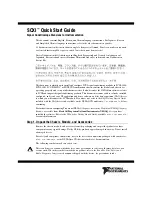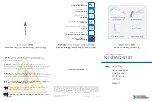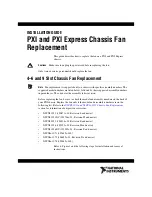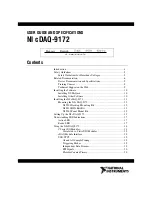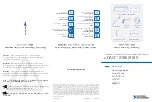
ELCB
H172203_1_001
59 / 234
8.4.4
Handling of High Gradient Rates for Auto Shim and Drift Compensation
Auto Shim and Drift Compensation handles gradient pulses at high rates similar to the LCB -
if necessary, the lock level is sampled at the optimum time.
The Auto Shim has been improved so that it is no longer necessary to adapt the Auto Shim
interval to the pulse program (timing of the gradient pulses). The ELCB now guarantees
automatically the specified time interval between setting of a new shim and the measurement
of the resulting lock level, regardless of the pulse program.
Automatic drift compensation is held by the Lock Hold pulse as well. However, drift
compensation is evaluated every second and it is not affected by gradient pulses shorter than
1 second.
8.4.5
Measurements Provided for Diagnostic
When the ELCB is started up, the following tests are performed:
H0 Current Measurement
For detection of correct H0 coil connection, it is possible to measure the current that actually
flows through the shunt resistor. If the H0 coil is not properly connected, an error message is
issued by the TopSpin application.
RF Board Tests (L-TRX)
The new L-TRX provides a larger set of test functions, which are run automatically after
power up and can be invoked manually by the Service Web for diagnostics (see also
History of Lock Regulator and Drift Compensator
There is a history of the Lock Regulator and the Drift Compensator available on the ELCB (5
minutes with 1 entry per second, 5 hours with one entry per minute and 1 week with one
entry per hour). The data is volatile and can be accessed by the Service Web.
Display/Download of the Latest FFA
While locking in initiated by Auto Lock, the Lock performs a simple
2
H experiment
(alternatively
19
F). The resulting FID can be visualized (graph of the spectrum) and / or
downloaded (as text) by the Service Web.
Summary of Contents for NMR AV4 BSMS System
Page 1: ...BSMS System for AVANCE NEO User Manual Version 001 Innovation with Integrity NMR...
Page 10: ...Contents x H172203_1_001...
Page 22: ...Safety 22 234 H172203_1_001...
Page 26: ...Transport Packaging and Storage 26 234 H172203_1_001...
Page 42: ...Chassis Mainframe 42 234 H172203_1_001...
Page 46: ...Fan Tray 46 234 H172203_1_001...
Page 55: ...ELCB H172203_1_001 55 234 Figure 8 1 ELCB Front Panel with LED s and Connectors...
Page 69: ...ELCB H172203_1_001 69 234 Figure 8 13 Lock RF Boards Diagnostics...
Page 70: ...ELCB 70 234 H172203_1_001...
Page 120: ...L TRX L 19F 120 234 H172203_1_001...
Page 148: ...BSVT Concept 148 234 H172203_1_001...
Page 166: ...SPB 166 234 H172203_1_001...
Page 172: ...VPSB DC and VPSB DC E 172 234 H172203_1_001 Figure 15 3 Block Diagram of the VPSB DC E...
Page 180: ...VPSB DC and VPSB DC E 180 234 H172203_1_001...
Page 187: ...VTA H172203_1_001 187 234 Figure 16 1 VTA Cable Connectors...
Page 193: ...VTA H172203_1_001 193 234 16 7 Ordering Information See Basic BSVT Configuration 124...
Page 194: ...VTA 194 234 H172203_1_001...
Page 200: ...Nitrogen Level Sensor 200 234 H172203_1_001...
Page 204: ...Radiation Shield Temperature Monitoring MAG RS 204 234 H172203_1_001...
Page 208: ...Installation and Initial Commissioning 208 234 H172203_1_001...
Page 210: ...Operation 210 234 H172203_1_001...
Page 216: ...Replacement of Parts 216 234 H172203_1_001...
Page 222: ...Contact 222 234 H172203_1_001...
Page 226: ...List of Figures 226 234 H172203_1_001...
Page 229: ...Glossary H172203_1_001 229 234 Glossary...
Page 230: ...Glossary 230 234 H172203_1_001...
Page 232: ...Index 232 234 H172203_1_001...
Page 233: ...H172203_1_001 233 234...
Page 234: ...Bruker Corporation info bruker com www bruker com Order No H172203...































